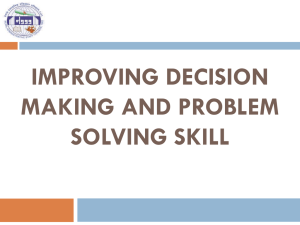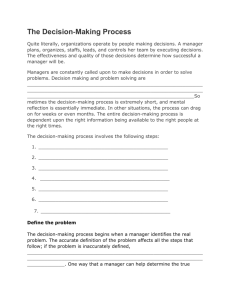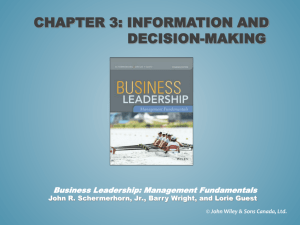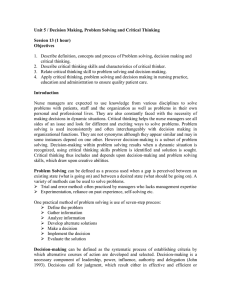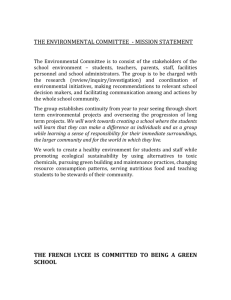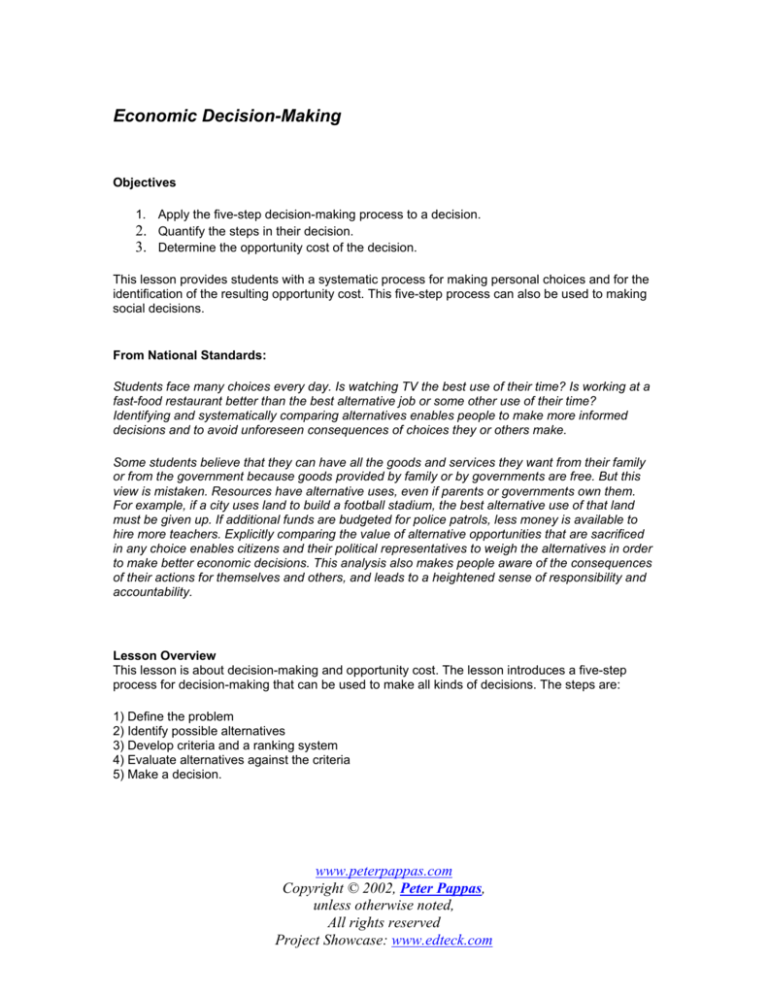
Economic Decision-Making
Objectives
1. Apply the five-step decision-making process to a decision.
2. Quantify the steps in their decision.
3. Determine the opportunity cost of the decision.
This lesson provides students with a systematic process for making personal choices and for the
identification of the resulting opportunity cost. This five-step process can also be used to making
social decisions.
From National Standards:
Students face many choices every day. Is watching TV the best use of their time? Is working at a
fast-food restaurant better than the best alternative job or some other use of their time?
Identifying and systematically comparing alternatives enables people to make more informed
decisions and to avoid unforeseen consequences of choices they or others make.
Some students believe that they can have all the goods and services they want from their family
or from the government because goods provided by family or by governments are free. But this
view is mistaken. Resources have alternative uses, even if parents or governments own them.
For example, if a city uses land to build a football stadium, the best alternative use of that land
must be given up. If additional funds are budgeted for police patrols, less money is available to
hire more teachers. Explicitly comparing the value of alternative opportunities that are sacrificed
in any choice enables citizens and their political representatives to weigh the alternatives in order
to make better economic decisions. This analysis also makes people aware of the consequences
of their actions for themselves and others, and leads to a heightened sense of responsibility and
accountability.
Lesson Overview
This lesson is about decision-making and opportunity cost. The lesson introduces a five-step
process for decision-making that can be used to make all kinds of decisions. The steps are:
1) Define the problem
2) Identify possible alternatives
3) Develop criteria and a ranking system
4) Evaluate alternatives against the criteria
5) Make a decision.
www.peterpappas.com
Copyright © 2002, Peter Pappas,
unless otherwise noted,
All rights reserved
Project Showcase: www.edteck.com
Process
Assign students an economic decision or let them identify one of their own. (Generally its best to
allow them to select a real-life economic decision.) It is also valuable for students to consider a
governmental decision under consideration by their school district or local government. This
allows them to do community research and affords them the option of sharing the results of their
decision in a presentation to local officials.
1.
2.
3.
4.
5.
6.
What are their alternatives?
What criteria could they use in considering his alternatives?
Are all criteria of equal important? If not how should they be ranked?
How will the rankings be represented? How can the results be accurately quantified?
Evaluate each alternative according to the criteria.
Make your decision and be prepared to justify it in a presentation to class.
Criteria
1
2
3
Alternative 1
Alternative 2
Alternative 3
Alternative 4
www.peterpappas.com
Copyright © 2002, Peter Pappas,
unless otherwise noted,
All rights reserved
Project Showcase: www.edteck.com
4
5




